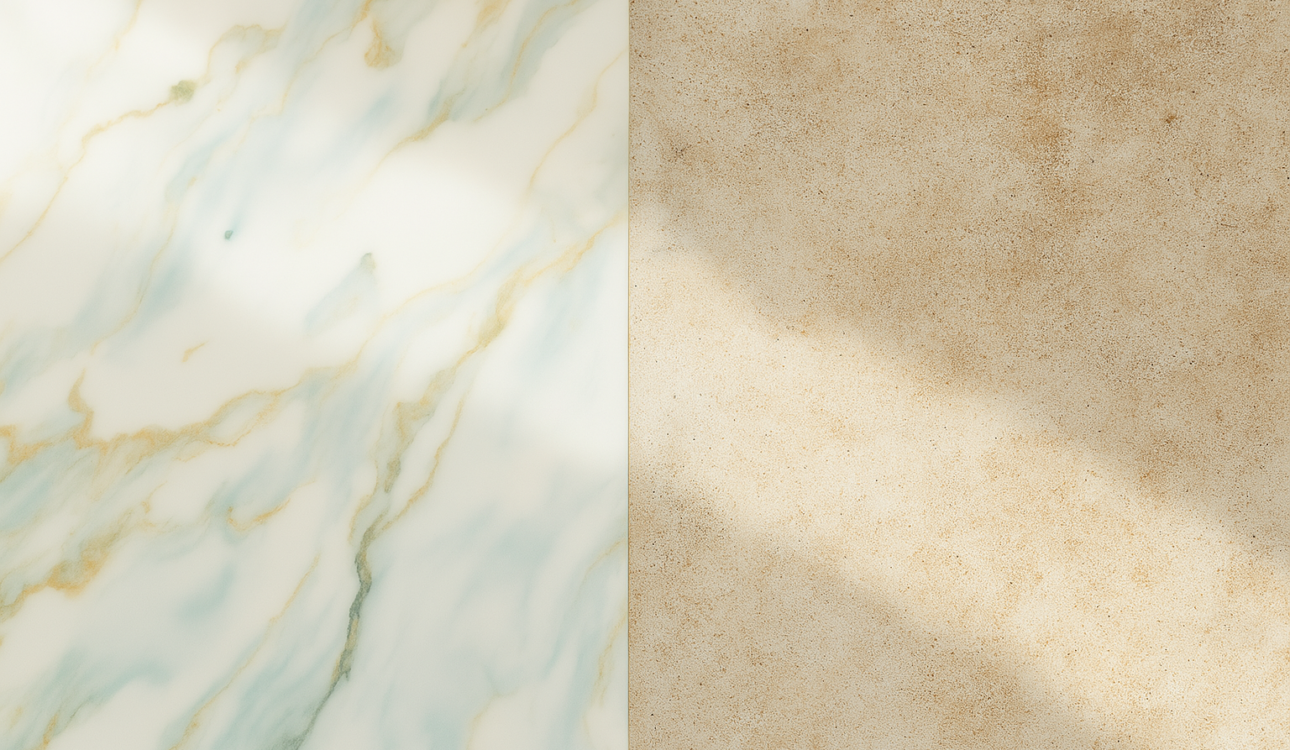When it comes to designing your dream kitchen or bathroom, choosing the right flooring is paramount. You’ve probably stumbled upon two popular types of tiles: porcelain and ceramic. Both have their merits, but knowing the differences between them can save you from a costly mistake.
Porcelain tiles are often touted as the premium option due to their density and strength compared to ceramic. Yet, ceramic tiles offer a vast array of design options at a more affordable price point. Let’s explore their differences further to see which one suits your needs best.
Understanding Porcelain Tile
Porcelain tiles are made from denser clay and fired at higher temperatures, which makes them more impervious to water and stains. This quality makes them ideal for high-moisture areas like bathrooms and kitchens. Not only are they tougher, but they also boast a sophisticated and elegant appearance, often resembling natural stone or wood.
Benefits of Porcelain Tiles
One of the key benefits is their durability. Porcelain is resistant to scratches, chipping, and fading, thus making them a long-lasting flooring option. Moreover, they can handle heavy foot traffic, making them perfect for commercial spaces as well.

Exploring Ceramic Tile
Ceramic tiles, while similar in appearance, are often made from less dense clay and fired at lower temperatures. They are generally more affordable compared to porcelain, making them a favorite among homeowners looking for easy renovations on a budget. Ceramic tiles are available in a plethora of designs, colors, and patterns, allowing for creative freedom in home décor.
Benefits of Ceramic Tiles
They are easier to cut and shape, which is a significant advantage during installation. Moreover, ceramic tiles provide a softer footfall and are often warmer than porcelain, making them cozy underfoot, especially in living spaces.
Cost Considerations for Tiles
The cost can often be a deciding factor for many homeowners and businesses. Generally, ceramic tiles are more budget-friendly, ranging anywhere from $1 to $5 per square foot, while porcelain tiles can run from $3 to $10 a square foot. However, consider the long-term value when making your selection. While the initial cost of porcelain might be higher, their durability may save you money on repairs and replacements in the future.
Maintenance & Care
Another factor to consider is the maintenance of the tiles. Porcelain tiles, due to their lower porosity, are easier to clean and maintain. A simple wipe with a damp mop is often enough to keep it looking pristine. On the other hand, ceramic tiles might require more regular cleaning due to their tendency to absorb moisture and stains, though they are still relatively low-maintenance.
Installation Differences
When it comes to installation, DIY enthusiasts might find ceramic tiles more manageable because of their lighter weight and easier cutting process. Porcelain tiles require specialized tools for cutting due to their density and toughness, which can make installation more challenging.
Professional Help
If you opt for porcelain, consider hiring a professional to ensure a flawless finish. This is particularly important in high-traffic areas where correctly laid tiles can make all the difference.

Aesthetic Appeal of Tiles
Both porcelain and ceramic tiles offer vast aesthetic appeal that can enhance any space. Porcelain tiles often come in larger formats and can offer a seamless look, while ceramic tiles provide more options for bold colors and intricate patterns. Your choice may depend on the overall theme of your project.
Environmental Considerations
In today’s eco-conscious world, the production and disposal of materials play a significant role in decision-making. Ceramic tiles are often considered more environmentally friendly due to less energy-intensive manufacturing processes. On the other hand, tiles made from recycled porcelain exist, making porcelain a sustainable choice as well.
Making the Right Choice
Choosing between porcelain and ceramic tiles ultimately depends on your specific needs, whether you prioritize budget, durability, aesthetics, or ease of maintenance. If you’re looking for something that can withstand heavy traffic and last for years, porcelain might be ideal. If affordability and variety are your main criteria, ceramic may win out.
Whichever you choose, both types can significantly enhance your space and complement the beautiful cabinetry offered by Evita Cabinets.
Conclusion
In conclusion, understanding the differences between porcelain and ceramic tiles is essential for making informed decisions for your home or business. Each type of tile has its unique benefits, and the right choice for you will align with your specific preferences and needs. At Evita Cabinets, we are ready to assist you in choosing cabinetry that perfectly complements your chosen tile. Reach out for a consultation today and let’s create a space you’ll love!
Frequently Asked Questions
What is the primary difference between porcelain and ceramic tiles?
Porcelain tiles are denser and less porous compared to ceramic tiles, making them more durable and suitable for high-traffic areas.
Are porcelain tiles more expensive than ceramic tiles?
Generally yes, porcelain tiles are more expensive due to their durability and strength, ranging from $3 to $10 per square foot compared to ceramic tiles that range from $1 to $5.
Can I install porcelain tiles myself?
While it’s possible, it’s often recommended to hire professionals for porcelain tile installation due to their need for specialized tools and techniques.
Which type of tile is better for outdoor use?
Porcelain tiles are often better for outdoor use due to their resistance to moisture and temperature changes.
How do I clean and maintain my tiles?
Porcelain tiles require simple damp mopping, while ceramic tiles may need more regular maintenance to reduce staining and moisture absorption.






